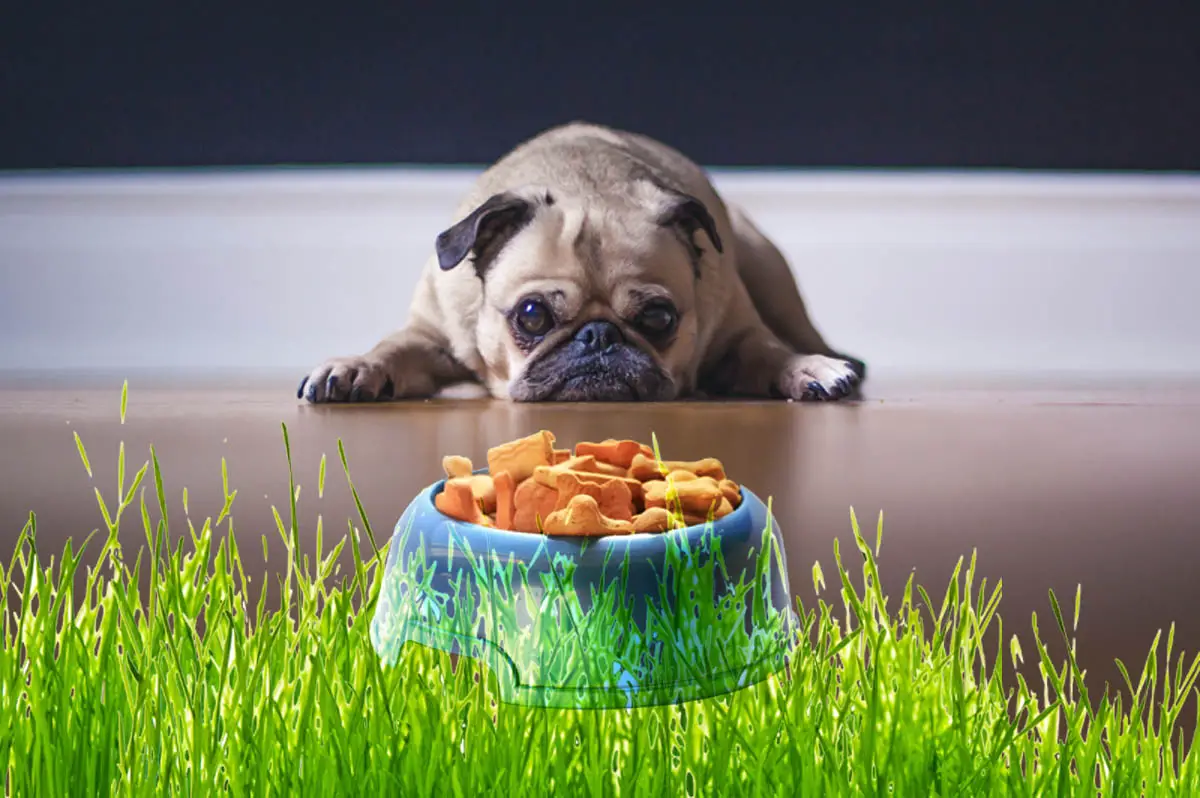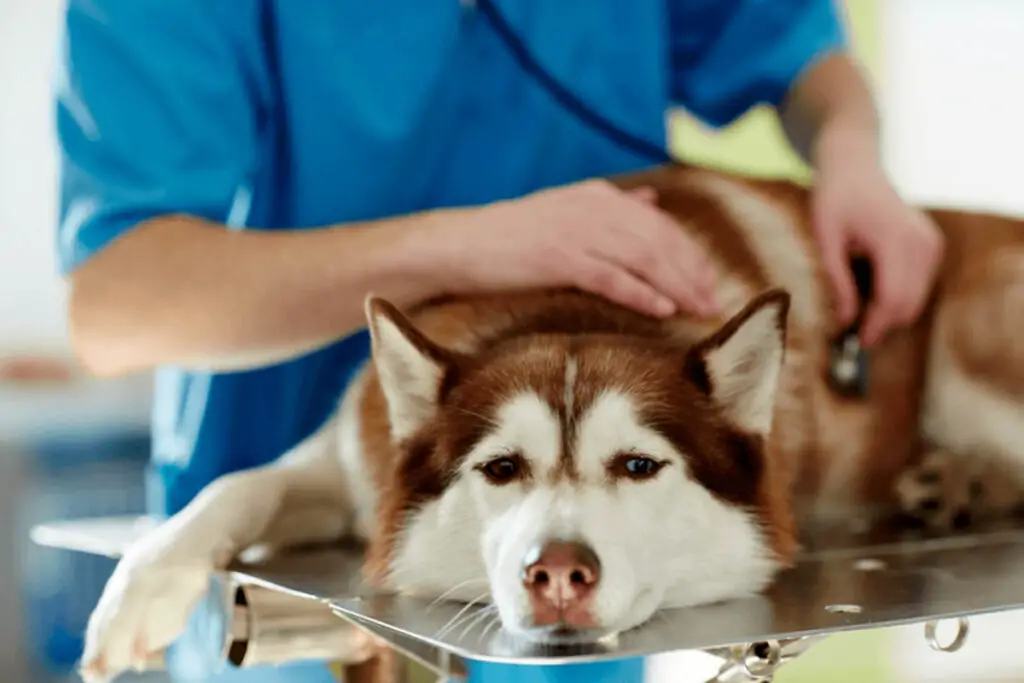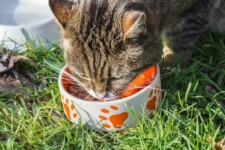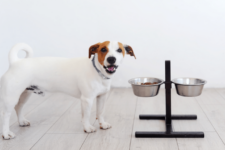Help! Dog Won’t Eat His Food But Will Eat Treats (Solve It Now)
Dogs have a naturally high appetite for food, and it is rare for them to stop eating their regular meals even for a moment.
If your dog’s feeding habit changes all of a sudden, it could point to an underlying problem, either an illness or a change in their environment.
If your dog won’t eat their normal food but will eat treats and table scraps, you should be concerned.
As soon as you notice this change of behavior you should attempt to find out the main reason for your dog not eating before the change turns into a serious illness.
In this article, we look at reasons why your dog won’t eat his food but will eat treats and other snacks. We’ll also explore the steps you should take to find the causes and possible solutions to help your dog get back to eating their regular healthy diet.

Are There Underlying Health Problems?
You might only associate anorexia with humans, but in actual fact it can be a disease just as real for your dog.
If your dog has changed their eating habits then a vet may diagnose them with anorexia, possibly due to a more serious underlying issue, and if left untreated can become life threatening.
If you regularly feed your dog dry kibble and they will now only eat soft treats it’s possible they have psuedo-anorexia due to dental pain or difficulty swallowing food.
In most cases it’s best to have your dog examined by a vet to ensure the problem is not deeper than a behavioral change.
How to Find Out Why Your Dog Has Stopped Eating (Steps)
If your dog is not eating their regular meal but is eating treats, you should take action to find out the cause of this change of behavior.
The following are some steps you can take:
1. Monitor Any Changes In Behavior
If your dog stops eating abruptly then it’s possible there is an underlying reason behind that.
- Has their sleeping pattern changed?
- Is their poop smelly?
- What is the color of their urine?
Asking yourself these questions can give you leads into the apparent change of behavior.
For example, if there is a change in your dog’s stool either in terms of color, smell, or the number of bathroom trips, you should schedule a visit to the vet to examine your dog and see if the dog is suffering from a specific illness.
2. Check Their Food
If your dog suddenly not interested in eating meals, it could be an issue with their food.
Examine the food that you are giving your dog to see if its stale, expired or there has been a change in ingredients.
If the food is not expired and everything looks fine, you should contact the manufacturer to see if there was a change in the ingredient composition that the dog does not like.
You can try a small quantity of a different dog food brand to see if your dog will eat. If your dog gobbles down the new brand to the last bit, this could mean there is a problem with the food.
However, if your dog refuses to eat the new brand, this could mean that the source of the problem could be something else other than the food.
3. Examine Your Dog’s Mouth And Skin For Anything Unusual
Examining your dog’s mouth can help unearth anything unusual such as swollen gums that may make it painful or uncomfortable to chew or swallow food.
Also check for the presence of parasites on your dog’s skin, fur loss, injuries, or lumps on your dog’s skin and legs.
4. Examine Your Dog’s Environment
A change in your dog’s environment could also trigger this change in their eating routine.
These changes could be a change in the location of the food bowl, a change in the house arrangement, a new baby, the presence of other pets in the house, etc.
Your dog may react to the new changes by refusing to eat food.
You should also check the house for missing objects, like toys, torn carpet, house plants, etc. that your dog may have eaten.
- In these instances, your dog may start vomiting while trying to remove the foreign objects.
- If your dog is struggling to vomit, you should rush them to the vet immediately.
Behavior Triggered By Owner Actions
Have you been giving your dog too many food scraps lately?
A dog could stop eating either because they are too full or they are waiting for more scraps from the next meal.
They are likely to have developed a liking for human food, thereby losing appetite for the dry kibbles that you are serving them.
Common Reasons Dog’s Won’t Eat Their Food But Will Eat Treats
If your normally high-appetite dog develops a selective loss of appetite, you should immediately try to find out the cause of the behavioral change.
1. Medical Issues
If your dog suddenly hates their food, it could point to a possible medical condition that needs to be addressed quickly.
Check for signs of illness by observing your dog’s behavior, poop and urine to determine if there is any change that may have occurred.
Some of the illnesses that may lead to a loss of appetite in dogs include depression, infection, swollen gums or tongue, tumors, parasites, allergies, poisoning, stomach upset, and problems with internal body organs such as the kidney, heart or liver.
Regardless of whether you’ve detected some illness or not, you should visit your vet to have your tail-wagging friend examined.
The vet may be interested in knowing the changes in behavior that you observed such as:
- The color of urine.
- Whether the poop is smelly.
- Is poop solid or is there diarrhea?
- Changes in the environment that may cause your dog to be depressed.
- etc.
2. Dental Issues Causing Pain
Swollen jaws and injuries in the mouth can be painful not only to your dog but to humans as well.
If your dog has swollen jaws or gum disease, they can experience pain and discomfort when chewing and swallowing their regular food.
This may force them to skip mealtime and opt for treats because they are soft and gentle to the gums.
3. Your Dog Doesn’t Like Their Food
Has your dog’s regular diet changed in the recent days?
If they are unhappy with the current diet, chances are that they will not eat it until they see their familiar diet or an alternative meal that they are happy with.
TIP
When switching to new dog food, make a gradual transition by mixing a portion of the new food with the old food, reducing portions of the old diet gradually until your dog is comfortable with their new food.
Similarly, if your dog has eaten the same diet for a long time, they may be bored with it, and are only interested in the treats and food scraps that taste a little different.
If that is the case, try different dog food brands to test what they do or don’t like.
4. Food Is Expired or Has Unfamiliar Ingredients
Your dog may also stop eating because the food they are eating is spoilt or has ingredients that they do not like.
Before pouring the kibble into the food bowl, always check the expiration date indicated on the packaging and the food itself. If the food is expired, dispose of it in a trash can.
If the food is not expired but your dog is still not eating, check if the food is spoiled.
Even though the dog food is stored in a sealed container, it may still get stale due to moisture or high temperatures.
If you notice any unusual smell, molds or other foreign objects in the dog food, get rid of it immediately and give them an alternative home-cooked meal or commercial formula.
TIP
Another thing you should check is if there has been a change in the ingredient composition of your regular dog food brand. Your dog may have developed sensitivities to one or more of the ingredients that the manufacturer added to the formula.
5. Changes In Your Dog’s Environment
Has anything changed in the environment that your dog is used to?
A recent relocation, a new family member, a new pet, change in the feeding bowl location or the absence of a common family member can trigger a change in your dog’s feeding behavior.
- Even a new feeding bowl or an adjustment to the feeding schedule can cause your dog to stop eating for a few days.
How To Restore Appetite In A Dog that Won’t Eat Their Food
Once you have identified the main reason why your dog is not eating their food, you should find a quick remedy to help them restore their appetite.
Following are some methods you can use to help restore your dog’s appetite:
1. Stop/Reduce The Treats
If your dog prefers eating treats rather than the main meal, you should take quick action since too many treats may have a negative health effect.
The immediate course of action that you should take is to ration or withdraw the treats completely for a while.
This will leave your dog with no alternative other than to eat what is left in the food bowl to satisfy their hunger.
Make a habit of only giving treats when your dog has done something deserving, rather than providing treats as an alternative to their regular food.
2. Try A New Food
Is the current food variety the problem?
If you suspect that your dog is sensitive to one or more ingredients in the current food, you should try a new variety or brand of dog food.
- When choosing a new dog food focus on the ingredients, guaranteed analysis and the type of protein.
- If your dog is used to diets that have chicken as the main ingredient, try other formulas that have a novel protein such as bison, duck, venison or rabbit as the main protein source.
Buy smaller quantities first to see what brand your dog will like.
If they do not like the first food you buy, try other brands in small quantities until you find one brand that they are comfortable with.
3. Schedule A Visit To The Vet’s Clinic

If your pup is still not eating despite switching to a different dog food brand, they may be suffering a health condition that needs to be examined by a vet.
Book an appointment with the vet at the earliest time possible to have your dog examined.
The vet will perform tests on your dog to find out if they have any illness that are causing a loss of appetite.
During the clinic visit, the vet may require you to provide a background of your dog’s condition such as the number of days they have not been eating, and the observed behavioral change.
4. Make a Food Schedule
Sometimes, a dog may stop eating their food due to a change in mealtimes.
- You can solve this by creating a food schedule for your dog and stick with it.
- Provide meals at the same time every day, and your dog will adjust to this schedule.
- Also, teach your dog to eat regular meals first before they can have any treats.
Sources
https://healthypets.mercola.com/sites/healthypets/archive/2015/07/15/assessing-dog-poop.aspx
https://vcahospitals.com/know-your-pet/gingivitis-and-stomatitis-in-dogs



